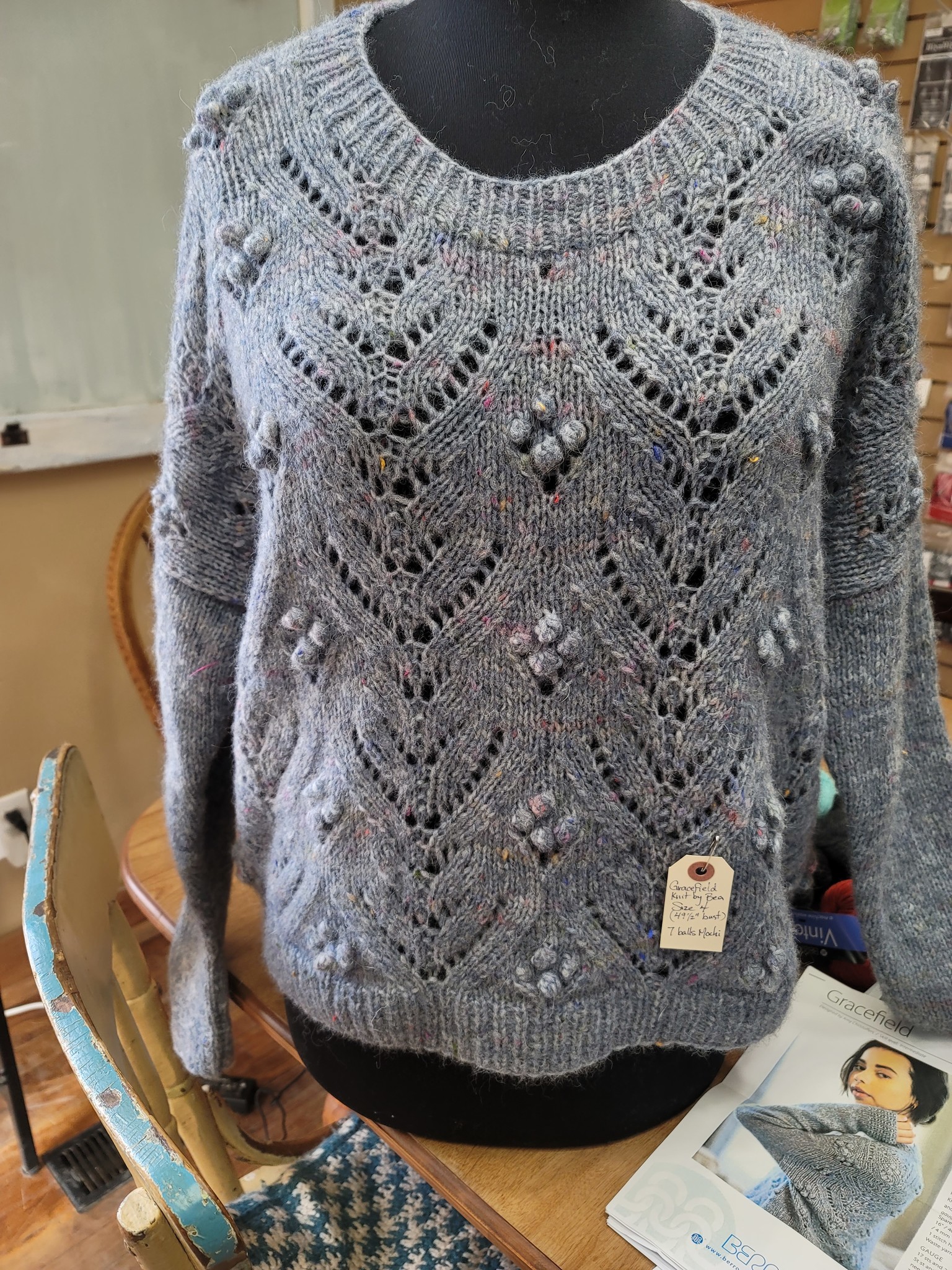Sweater Knit a Long Introduction

This is a summary of the posts we put together to discuss starting your sweater.
If we are going to knit sweaters this year there are going to have to be some decisions. What sweater to knit?! There are a couple of ways to approach this, find the pattern then find yarn to suit or, find the yarn and then find an appropriate pattern. I am going to discuss the pattern led decision here.
Flipping back through my Ravelry for the last few years, it seems I tend to make a couple of sweaters a year. I’ll attach a few images. If you follow any of our store social medias you will probably have seen these.
If you are new to knitting garments for yourself my suggestion is to not go too far off the beaten path. Have a look at your wardrobe, what do you wear every day. Do you love an oversized cardigan and reach for them all the time? Or do you like a sweatshirt style pullover. For your first adventure into garment knitting, stick to a silhouette or cut you already know and love and then you can work on making the fabric to fit that.
So you have decided what sweater you would like to knit, now you need to choose your yarn. The first variable here is the gauge, what sized needles with what yarn did the designer work with to make that sweater. Within yarn weights there are huge variables though and something you need to think about. For instance, is the design written and a very different gauge? The Love Note is a super soft sweater knit with a combination of yarns that end up at around a DK weight however the designer uses a much larger needle to achieve the open airy look of the fabric. Different fibres will be behave very differently, alpaca is very drapey and may stretch over time. Super wash yarns stretch as well and are much smoother than their untreated wool counterparts. Come in to the shop and we can discuss options.
Now we have a pattern, a yarn choice and the next step has to be a gauge swatch. *everyone groans* I get it, this is when we are all hyped up and excited to start our new project and a gauge swatch just doesn’t feel like the real deal. So many sweaters fail at this point, if you don’t test your yarn choice you have no idea if you have made the correct decision. I love the analogy that this is a ‘first date’ with your yarn. There are SO MANY articles on working your gauge swatch I don’t think I can add a lot here. Simply, knit a chunk of fabric with the needles you think you are going to use and have a look at it. (Don’t forget to wash it! Water can change the picture completely.) Do you like the fabric? Is it too sheer, too stiff? Did you enjoy knitting it? Maybe the texture of the needle you chose just don’t work with this yarn. Try some stuff out, do the special stitch to make sure you understand how it works, play with some stripes. None of this is a waste of time or energy. Now measure your swatch and see how many stitches are in the 4” block more patterns use as reference, how many rows? At this point the stitch count is the most important as this determines the size of your sweater, most of the time a variance in row counts can be worked with. Do the swatch and then let’s chat.
What size should you make?
You may notice that a lot of patterns these days have done away with small, medium and large sizing. This is to push us to think a bit more about what size we are going to knit. You may find your pattern recommends a certain amount of ease. This is the amount the fabric varies from your actual body measurements. Large, oversized sweaters can be meant to be work 10 to 20 inches larger than you are. A fit, body conscious style can actually be smaller than you are to stretch and form to your curves.
This is also a great time to use your wardrobe for reference. What’s the measurement of sweaters you love to wear? This can really help decide what size you should knit.
So take that into account, choose your size and then go through your whole pattern and mark anywhere there is multi sized numbers which one you are going to refer to as you work. This can save so many hassles as you go along.

Comments
Be the first to comment...